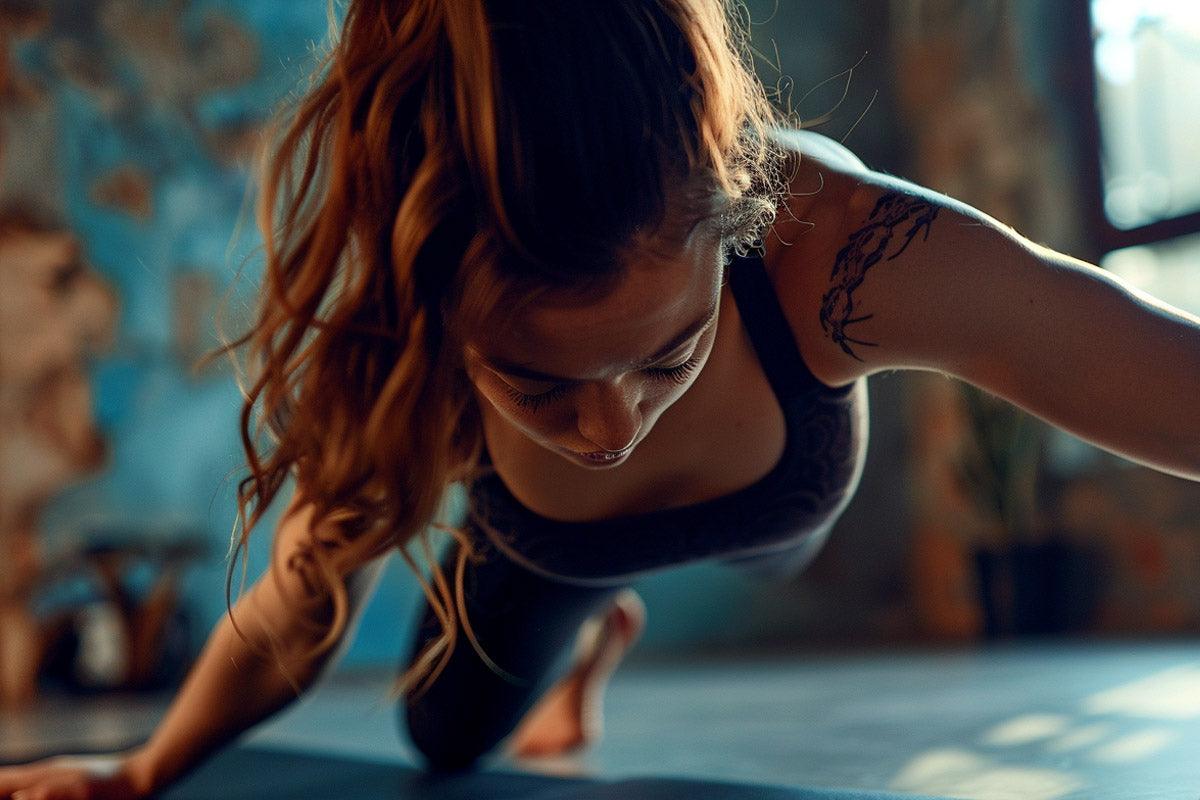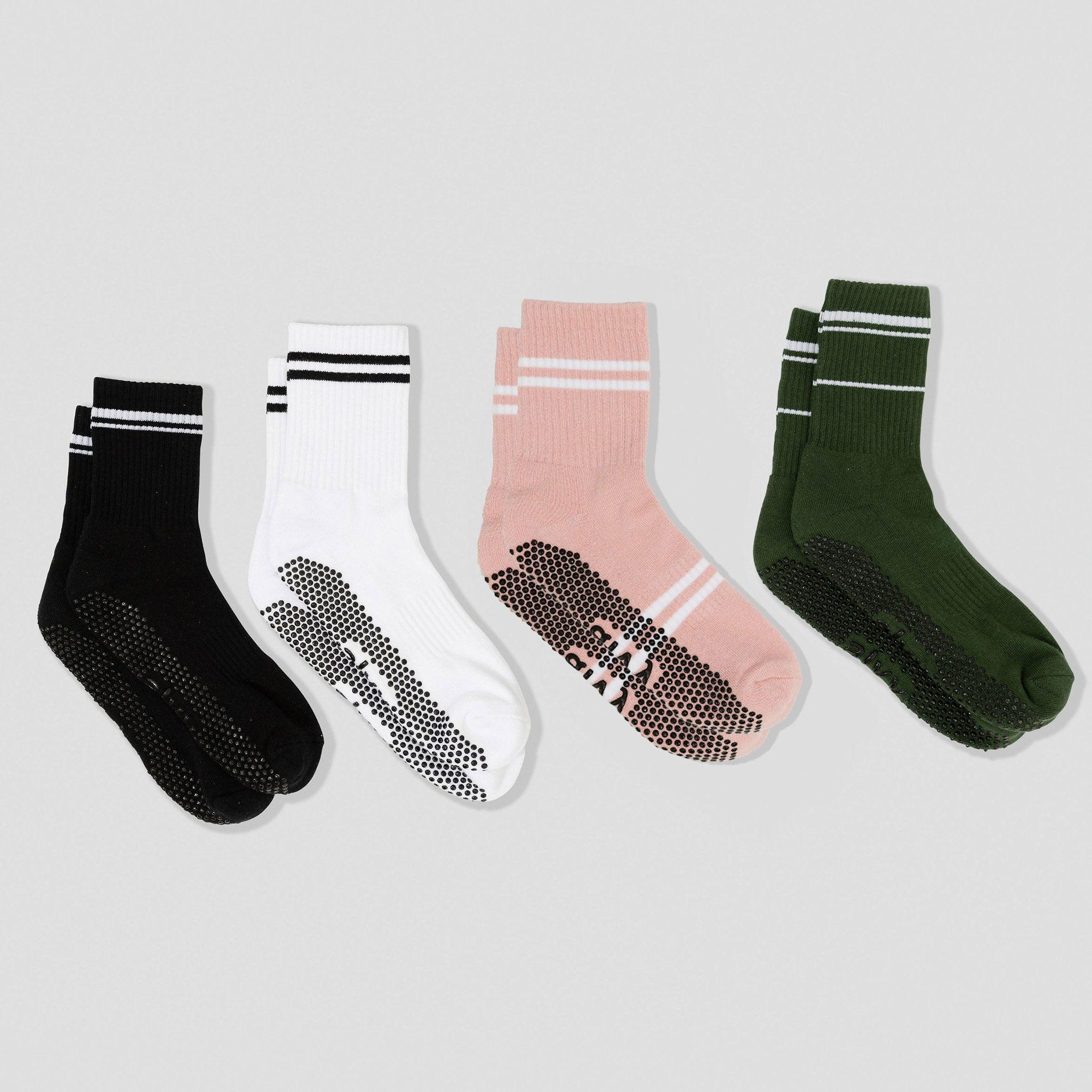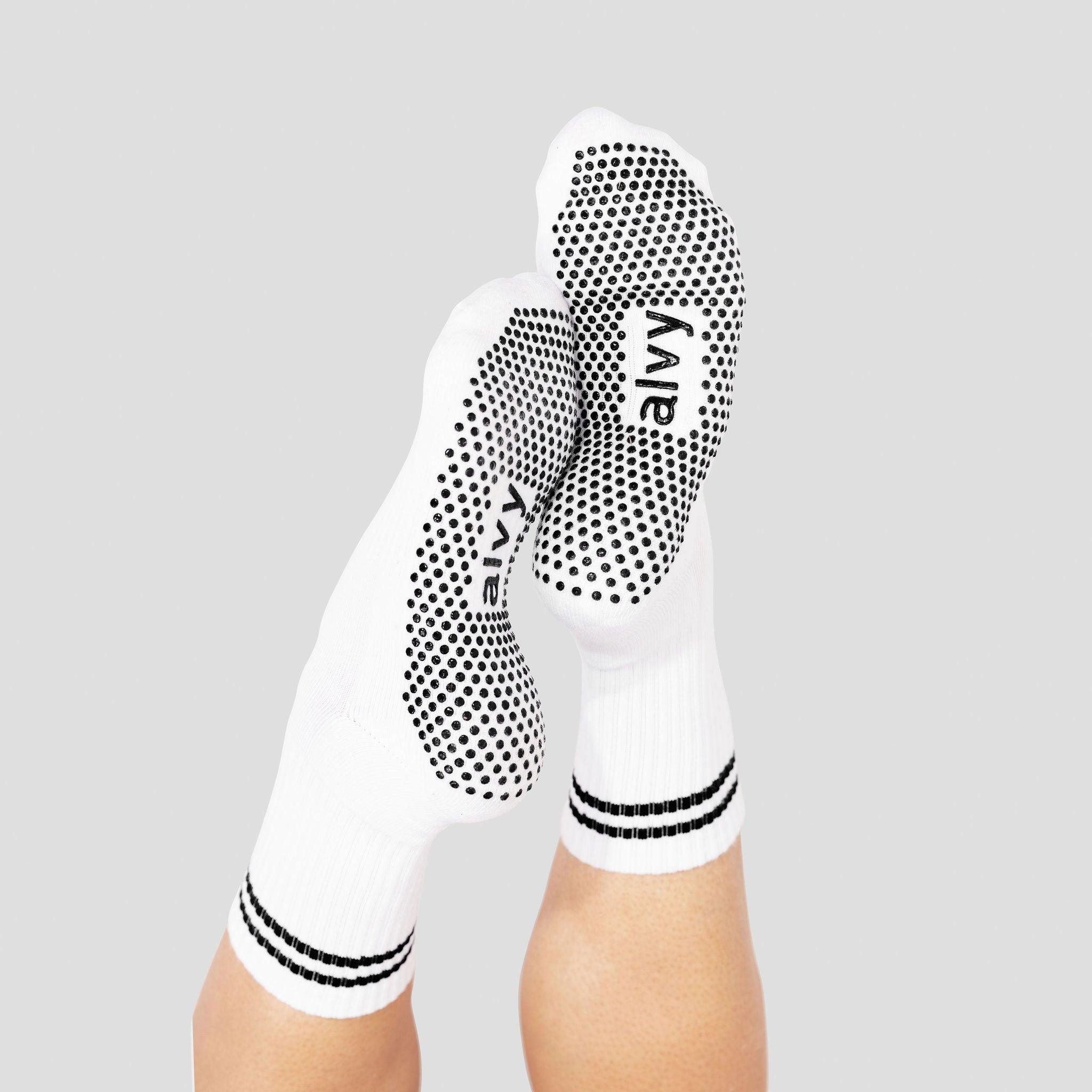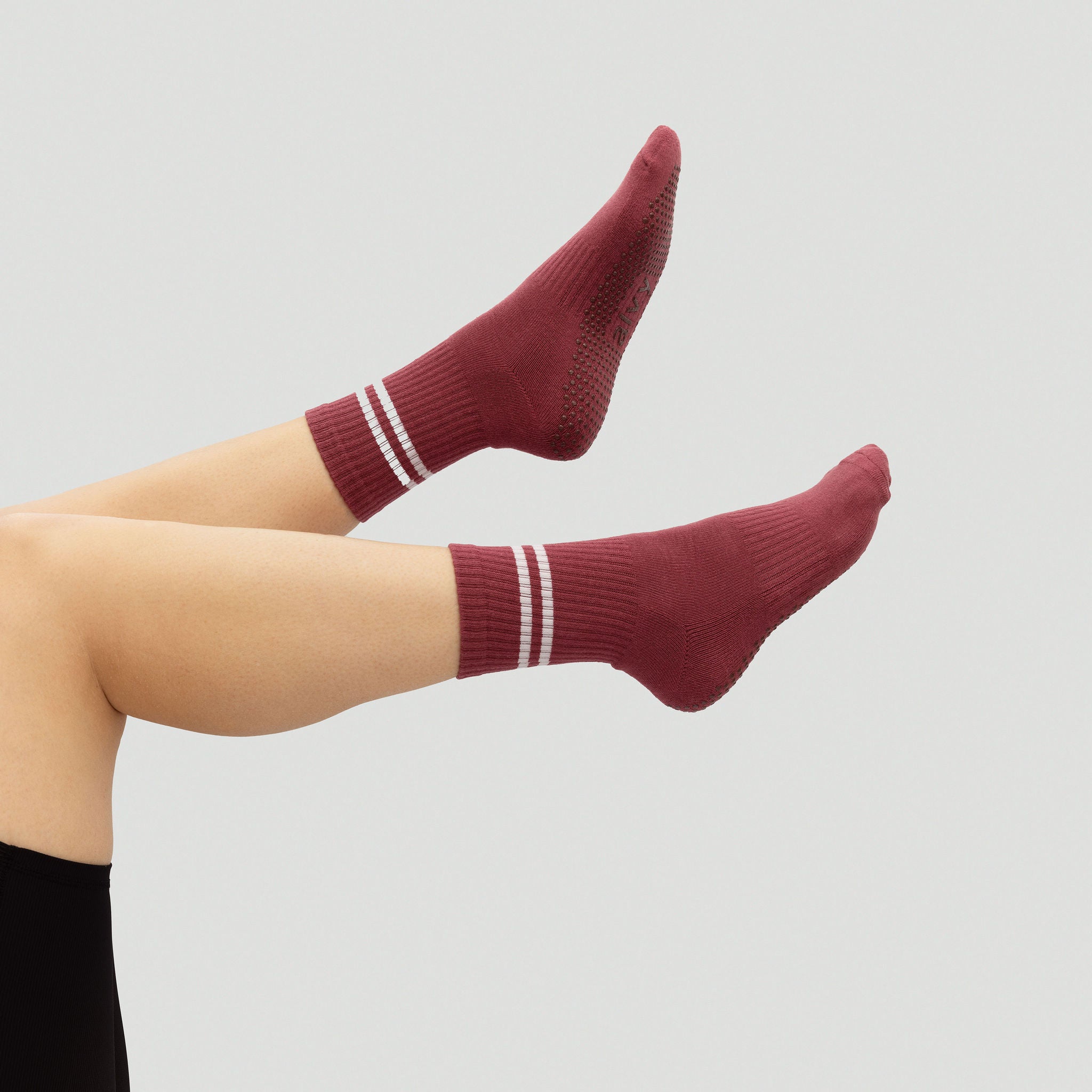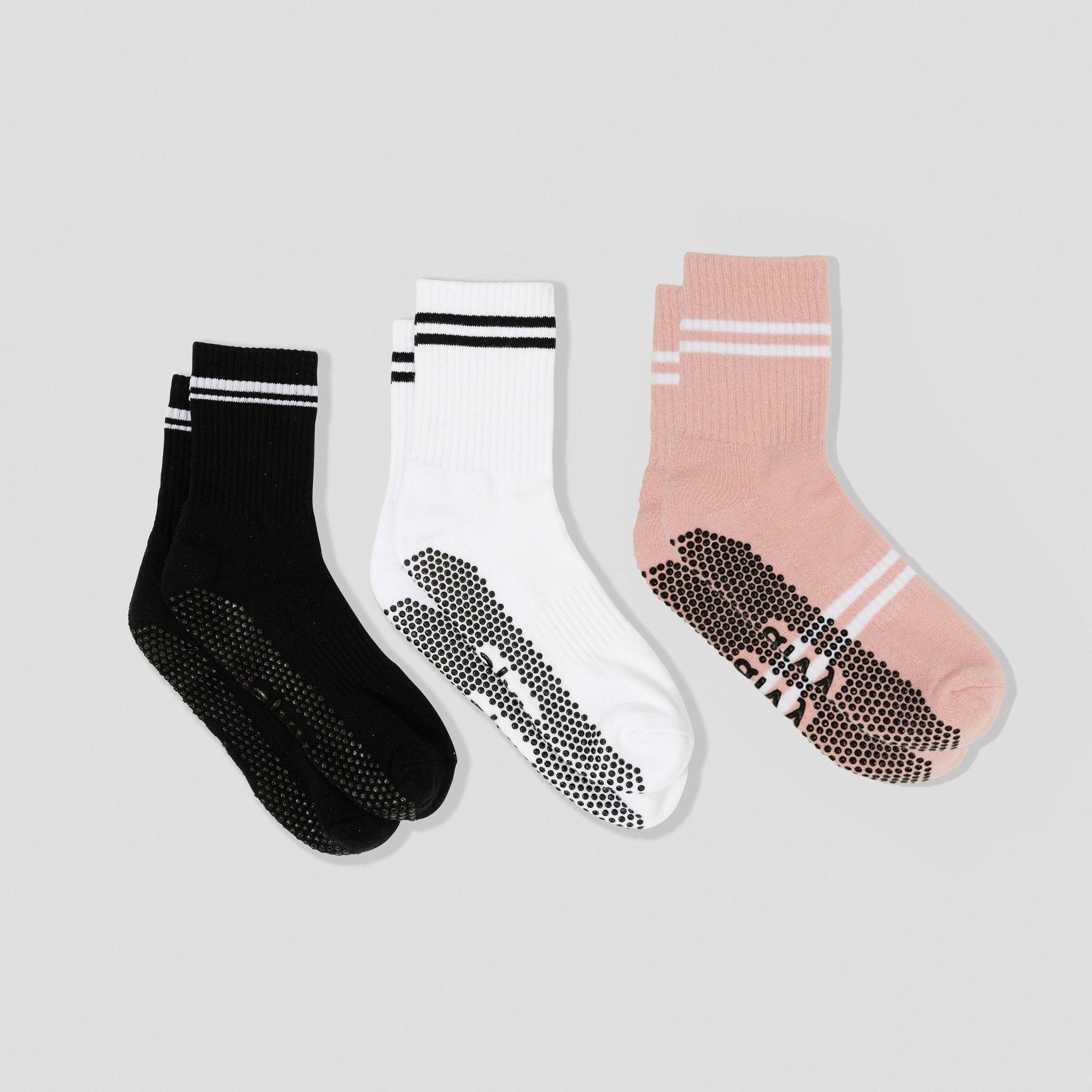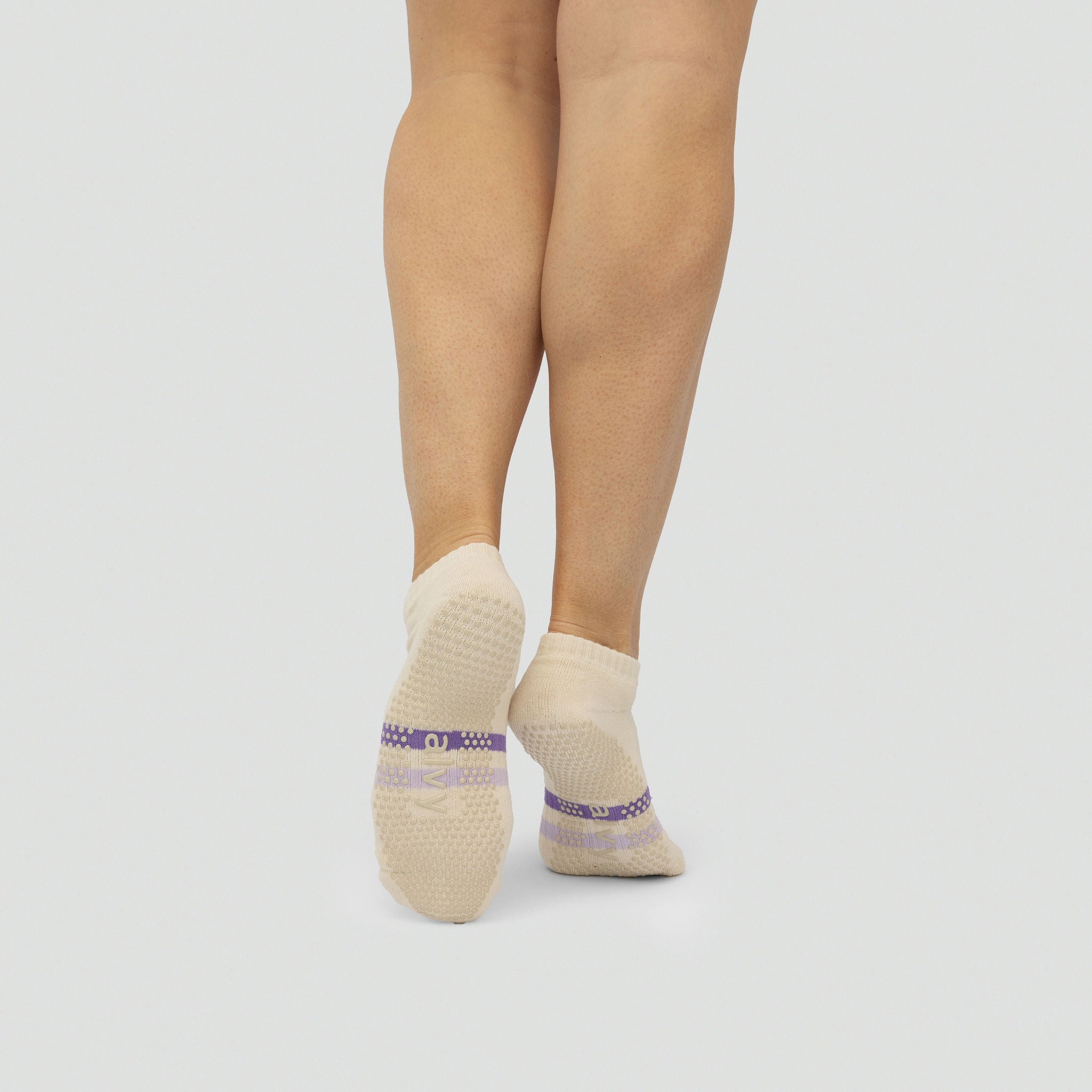The dos and don’ts of a Pilates workout aren’t necessarily limited to beginners. They apply to everyone, including those who have been doing it for some time.
If you want to get the best out of your sessions or are about to step into a studio for the first time, these handy tips will help.
Key Takeaways:
- Proper form, going slow and steady, and following your instructor are the key aspects to seeing results.
- For safety, a good pair of Pilates socks, tying back hair and wearing form-fitting clothing is paramount.
- Finding a good rhythm of inhaling and exhaling is often one of the most underestimated aspects of a good Pilates session.
What You Should Do During a Pilates Workout
Take it from me, I wish I had known these before I started reformer Pilates.
1. Wear comfortable Pilates clothing
It might be obvious, but I have seen some interesting attire choices in the studio.
Choose comfortable, form-fitting clothes suitable for Pilates that allow you to move freely and enable your instructor to see your alignment. You want to feel comfortable during a workout. Feel free to wear a light jumper if the studio is cold, but you will take this off during the session.
Loose-fitting clothing should be avoided, including any with long zippers or tangled accessories. Also make sure you have a pair of Pilates socks with grip soles prevent slipping and provide extra stability, especially when using equipment. They also keep your feet warm and comfortable during your practice. Don’t wear grip socks from Kmart. Their longevity and stability are not worth the cheaper price.
2. Focus on your form
Maintaining proper form is crucial in Pilates to avoid injury and maximize the effectiveness of each exercise. Pay attention to your alignment and follow your instructor’s cues closely.
3. Tie back long hair
Keeping your hair tied back ensures it doesn't interfere with your movements or get caught in the equipment. A neat ponytail or bun keeps you focused on your workout.
4. Listen to your body
This is in my top five do’s for good reason, as it’s arguably one of the most critical aspects of Pilates.
Pilates should feel challenging but never painful. If something doesn’t feel right, stop and consult your instructor. Most Pilates instructors should and usually encourage stopping.
Respecting your body’s limits helps prevent injury and promotes a more effective workout.
5. Start with an instructor
Rather than using an Australian Pilates app at home and potentially developing bad habits over time, starting in a studio setting with an instructor will do a world of good for you.
You can learn the fundamentals from a professional Pilates instructor, get form corrections, and advance safely with their assistance. They offer insightful advice and customised modifications, particularly in the beginning.
6. Rest and reset when you need to
Taking breaks during a specific exercise that you find challenging is okay. The instructor should encourage this, so don’t be afraid to stop while everyone else is still going. It’s not a competition.
The glute bridge is an example of an exercise where you can rest and consider your form. Since you need to hold the elevation of your glutes at the same level while using the carriage, you might find yourself dropping down slowly, which isn’t the point of the exercise. Stop every now and then and sanity-check your form to make sure you’re doing it right.
7. Take your time and go slowly
Pilates is all about controlled and deliberate movements under tension. Take time to perform each exercise correctly, focusing on quality rather than quantity. Going slower is better since you want to prolong the time under spring tension.
Related: How often you should go to Pilates.
8. Find your neutral spine
Understanding and maintaining a neutral spine position is key to performing Pilates exercises safely and effectively. This alignment helps support your posture and protects your back.
If you have a weak back, focusing on bringing your navel inwards toward your spine during exercises like planks will help maintain a neutral spine.
9. Engage your core properly
Your core is the powerhouse of your body in Pilates. Engaging correctly provides stability and strength for all your movements, enhancing your workout's effectiveness.

10. Breathe well
Proper breathing techniques are essential in Pilates, and you should never hold your breath. Inhale deeply through your nose and exhale fully through your mouth, coordinating your breath with your movements to enhance performance and relaxation.
11. Tell the instructor if you are injured or pregnant
Informing your instructor about injuries or pregnancy allows them to modify exercises to suit your needs, ensuring a safe and effective workout. Usually, the instructor will ask the class these questions before starting.
Additionally, if you feel a bit sore or tight in particular areas of your body, it’s worth telling the instructor since they can devise alternative exercises.
12. Maintain consistency
Regular practice is key to continued progress. Aim for at least three to four weekly sessions to maintain and improve your strength, flexibility, and endurance. Consistency will help you achieve long-term benefits and keep you motivated.
Related: 20 Joseph Pilates quotes to keep you motivated.
What not to do in Pilates
1. Rush through exercises
People who start Pilates are prone to rushing through their workout. Pilates focuses on controlled, deliberate movements, and rushing can compromise form and increase the risk of injury.
2. Expect to lose significant weight
While Pilates can tone your muscles and improve your core strength, it is not primarily a weight-loss exercise. Although Pilates results in some caloric expenditure, it can be combined with a balanced diet and cardio workouts for more significant weight loss results.
3. Compare yourself to others
Everyone progresses at their own pace in Pilates, and it’s okay to adjust springs and introduce accessories (or leave them out) to make it easier for you. Comparing yourself to others can be discouraging and counterproductive.
Focus on your journey and celebrate your progress. Follow the advice in this article, and you will see results over time. To learn how long it takes to see Pilates results, here's our opinion.
4. Don’t hold your breath
Holding your breath can create unnecessary tension and reduce the effectiveness of your workout. Practice proper breathing techniques to maintain a steady oxygen flow to your muscles.
5. Using too many high-tension springs
While it might seem like more tension equals a better workout, using too many high-tension springs can compromise your form and increase the risk of injury. If the tension is too high, chances are you aren’t using the muscles you should be using or can’t because the effort required is too much.
Conversely, using lighter springs can help you engage the right muscles, resulting in a far more effective workout.
Follow your instructor’s guidance on appropriate resistance levels.
6. Don’t overdo it
Pay attention to your body and refrain from overexerting yourself. Overexertion can result in injury or strain to the muscles. As your body adjusts, start with shorter sessions and progressively increase the length and intensity.
7. Ignoring a proper warm-up and cool-down
When you get better at the warm-up and cool-down exercises, it can be tempting to cut corners. But these are necessary to help with healing and to prepare your muscles for the workout. Stretching should consist of static and dynamic poses before and after your workout.
8. Sacrificing form for intensity
Advanced practitioners might push for more intense workouts, but it’s crucial not to sacrifice form. Maintaining proper alignment and control is essential, even in challenging exercises, to prevent injury and ensure effectiveness.
9. Don’t become complacent
Avoid falling into a routine where you perform the same exercises repeatedly. Pilates offers a wide range of movements and variations. Keep exploring new exercises and techniques to prevent plateaus and continue growing in your practice.

